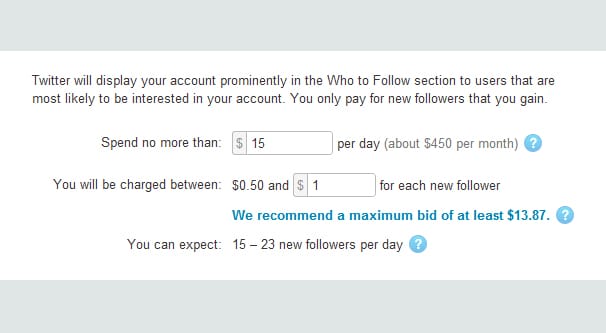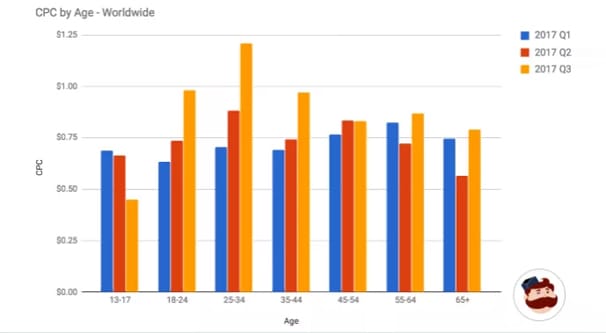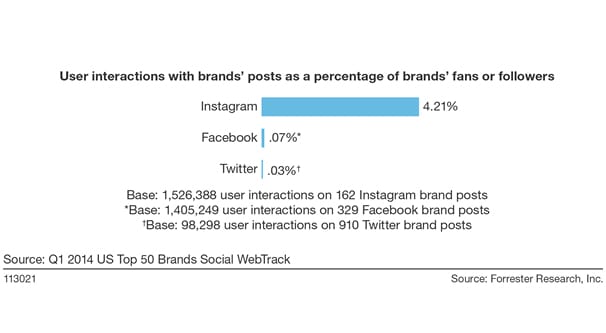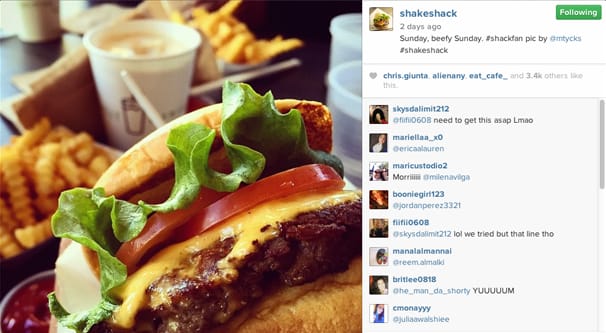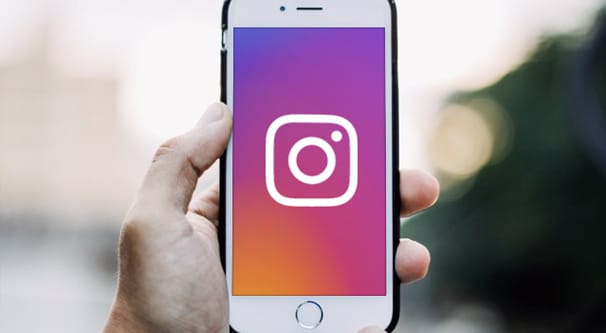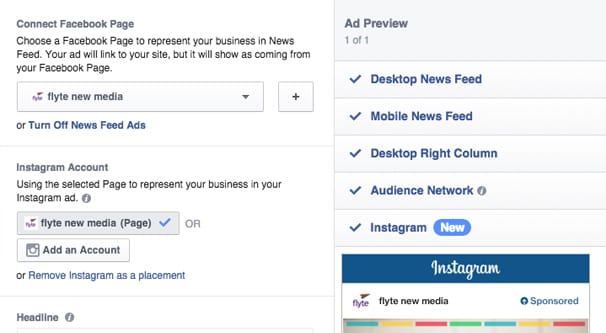 Written by ContentPowered.com
Written by ContentPowered.com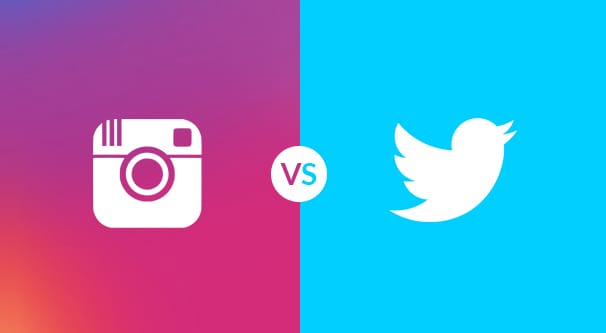
Instagram and Twitter both pull their weight in social media, and they’re both large platforms. Twitter is often considered one of the Big Three, along with Facebook and either Instagram or Google+ depending on your proclivities. Instagram has some barriers to entry that are steeper than other social networks, but at the same time, the benefits are well worth it if you can get inside the walled garden.
People often compare and contrast different social networks. I can see where they come from, of course. When you have a finite budget, a finite amount of time, and you’re not sure whether or not you want to pick up a social network, you want to know which one is better. You can’t always just dive in and use both. In many ways, too, a dead social media profile is worse than not having a profile at all. It’s the difference in a retail outlet between having two locations, or having three locations where one is a building that has your sign but looks abandoned.
Of course, Instagram and Twitter are not really equivalent platforms. They both started out as mobile-focused networks, but they have taken very different twists and turns in their development, which has led them to very different outcomes. Instagram is surging, Twitter is stagnant, both platforms have valid marketing uses, and you probably want to know. Which one is more valuable on a per-follower basis?
Let’s take a look at both platforms from several different perspectives.
The Matter of Cost
For the “cost” argument, we have to consider the financial cost of operating on a platform. I’m going to assume that you do all of your copywriting and all of your graphic design in-house, and that you aren’t spending a significantly different amount on each site. In other words, I’m discounting the variation in price between writing copy for each site. I want to pick costs that we can easily compare, in a sort of apples-to-apples way.
This isn’t going to be the most accurate comparison in the world, simply because the platforms ARE very different. I’m going to focus on using ads to pay for followers, specifically through the platform itself. Twitter and Instagram each have their own perks and drawbacks to their ad programs, which I’ll discuss in a moment.
For Twitter, you have a few means of using ads. You can promote specific tweets, you can promote your account so it shows up in the “people to follow” suggestion box, and you can pay to promote a hashtag into a trend.
Of the three, the cost we’re most interested in is the promoted account. Why? When you promote a tweet, you’re paying for all forms of engagement on that tweet. You don’t pay for impressions, but you do pay when a user likes, retweets, clicks a link, or follows you through that tweet. There’s no separation in the forms of engagement, so you can’t pull out how much a follower costs. The average cost of promoting a tweet is about $1.35 per engagement action, according to ThriveHive.
As for promoting a trend, well, it’s very much outside the range of the typical small business budget. Trends can be incredibly effective at influencing public discourse and getting traffic to specific hashtag discussions. It will get you an immense amount of exposure and probably a ton of followers, but you need to be able to pay the cost of entry. That cost is not cheap; figures I’ve seen quoted range from $150,000 to $250,000 per day. Unless you’re a huge company like Walmart or Toyota, you’re not going to be able to afford this.
As far as promoting an account, the only action that matters is the follow, so you can be assured that you’re paying for a follow and not for some nebulous other form of engagement. Promoted accounts will cost you around $2.50 to $4.00 per follower.
On the Instagram side of things, it’s even harder. There’s no promoted account ad. You can run ads for brand awareness, which is basically just impressions, for reach, for traffic, for app installs, for engagement, for video views, and for website conversions. Since you’re only promoting posts, you end up paying for all sorts of clicks rather than just clicks that lead to follows.
Instagram ads can have very cheap CPM costs, but actually tend to stray higher. A CPM for Instagram is often closer to $5.
The trick to Instagram ads is that they vary incredibly wildly based solely on the fact that it runs off the Facebook ads platform. Facebook ads have approximately three different infinities worth of targeting options you can mix and match, to make your prospective audience as broad or as narrow as you could possibly want. Very broad audiences tend to be quite cheap, but also very low converting. Meanwhile narrow, targeted audiences are more expensive but have a higher ROI. Costs, then, vary accordingly.
Which is more valuable, in terms of pure money? It’s impossible to say. If you run Instagram ads at a $5 CPM and get 3 followers out of that $5, you’re around the same cost per follower as Twitter. If you get more followers, your cost per follower is cheaper, meaning your money stretches longer.
Of course, you can buy followers for a lot cheaper from third party services. You have to be careful if you try that, though; often times they’re fakes or they have low engagement rates. Fake Twitter or Instagram followers can hurt your profile, and it’s easy to spot them on both sites.
The Average Engagement
Back in 2014, Forrester research published a study about the average engagement rates for various social networks. The results shocked the marketing world; not only was Instagram higher than all the rest, Instagram was higher than all the rest by several orders of magnitute. Where Facebook had an average engagement rate of .07% of the brand’s audience, Instagram’s was 4.21%. That’s something like 60x more engagement per follower! Twitter was even worse than Facebook, at .035%, which makes Instagram 120x more powerful for engagement.
Of course, this immediately sparked a social gold rush towards Instagram. The huge barrier to entry kept a lot of low-effort brands out, but those that managed to make use of the platform thrived. The high engagement rate was, however, a function of how organic the platform as a whole was at the time. As more brands come in hoping for engagement, engagement rates drop as people stop interacting with thin advertising.
It’s more difficult to find modern engagement rates studied in the same way. Forrester probably has a report, but their reports cost hundreds of dollars; not something I’m going to buy for a one-off blog post. This study shows Instagram engagement rates closer to 2% these days, though it varies based on size of the account. One thing you can bet on, though, is that Instagram has not fallen from their position as king of the hill.
So, in terms of engagement, Instagram followers are by far the more valuable option. In fact, they aren’t just better when compared to Twitter; they’re better when compared to any other social network.
Variations in Industry
I was going to cover conversion rates next, but the thing is, the conversion rate of an account depends heavily on the product. A specialty high-end yacht store might spend several hundred thousand dollars on advertising only to get one conversion, but if that conversion earns then $10 million, it’s certainly worth it for them. A shop selling iPhone cases might get an extremely high conversion rate and still barely break even, based on the cost of competition.
So instead, let’s talk about the variations in industry. Differences in industry in general had different average conversion rates. You can read this in-depth article to see what the average conversion rate based on your type of product is, for example.
Instagram is best with very visual industries. A plumber probably isn’t going to get much traction with pictures of old pipes and new PVC installations. As such, you can expect the site to perform best for industries that are quite visual. Celebrities love it, music and fashion are great. Entertainment in general, as well as the hospitality industry benefit greatly from showing off venues. The space industry is always attractive, and photographers absolutely love the site. Luxury goods are great as well, as people covet what they can’t afford but love to look at.
Twitter is all over the board. The best industry in terms of engagement rate is music, but the best in terms of follower count is actually broadcast media. For engagement rates, entertainment, aerospace, and gaming top the charts after music. For follower count, news agencies, musicians, games, and entertainment entities are all at the top.
You can see that there’s some cross-over, though in part that’s simply because a large public figure like Beyonce is going to be popular on any site she chooses to use. Both sites also benefit from great visual opportunities, though it’s virtually mandatory on Instagram while it’s only highly recommended on Twitter.
Differences in Platform
Speaking of the differences between Twitter and Instagram, there are some key differences simply in how you use them.
The biggest is that Instagram is basically restricted to mobile devices, while Twitter only caters to them.
With Twitter, you can post from pretty much anything; smartphones, text messages, apps on pretty much any device, integrations in other apps and on sites, and directly from a desktop client. With Instagram, they don’t allow posting via their API, so you need to actually use a mobile device to post. You can’t even post from the desktop client, you can only view images. You can comment on images you view, but you can’t post your own.
As far as paid advertising is concerned, I mentioned this above, but Instagram has a distinct advantage. Given that Instagram is owned by Facebook and account information is largely the same from site to site, there is a ton of data available for targeting ads.
You have a few targeting restrictions on Instagram, but you have a lot more options there than you have anywhere else but Facebook itself. Twitter, meanwhile, has some targeting but nothing on the same scale.
This means you can more precisely target a specific audience on Instagram, which dramatically increases the potential value of your dollar. Conversion rates can skyrocket, and a highly targeted audience is a lot more likely to engage with your site.
On the other hand, Twitter has a lot of issues socially. They’ve been fighting a lot of political corruption and social justice issues recently, and have received a lot of backlash. This has led to a minor exodus of users simply abandoning the platform until something is done about it all. Twitter is striving to address the issues, but it remains to be seen how effective their techniques will be.
Instagram is good for brand awareness, for visual media, for advertising, and for engagement. Twitter is good for broadcasting news, for customer service, and for immediate interactions with an audience. They serve different purposes.
Final Verdict: Use Both
As you might expect, my recommendation is obviously to just use both sites. They fill different niches. If you can manage to use both, I highly recommend doing so. You can cross over a lot of your messaging, but you can reach unique audiences in unique ways, for specific benefits for each platform.
That said, if you only have the time or money to use one, I would recommend Instagram. The individual user on Instagram is on average going to be much more engaged with your brand, and is more likely to be a brand advocate. Twitter is good for things like customer service and status updates, while Instagram is better for brand awareness and audience growth. Focus on Twitter if you need a news outlet or CS channel, but otherwise Instagram is going to be the better choice. That is, of course, if you can use it effectively with a mobile device.
